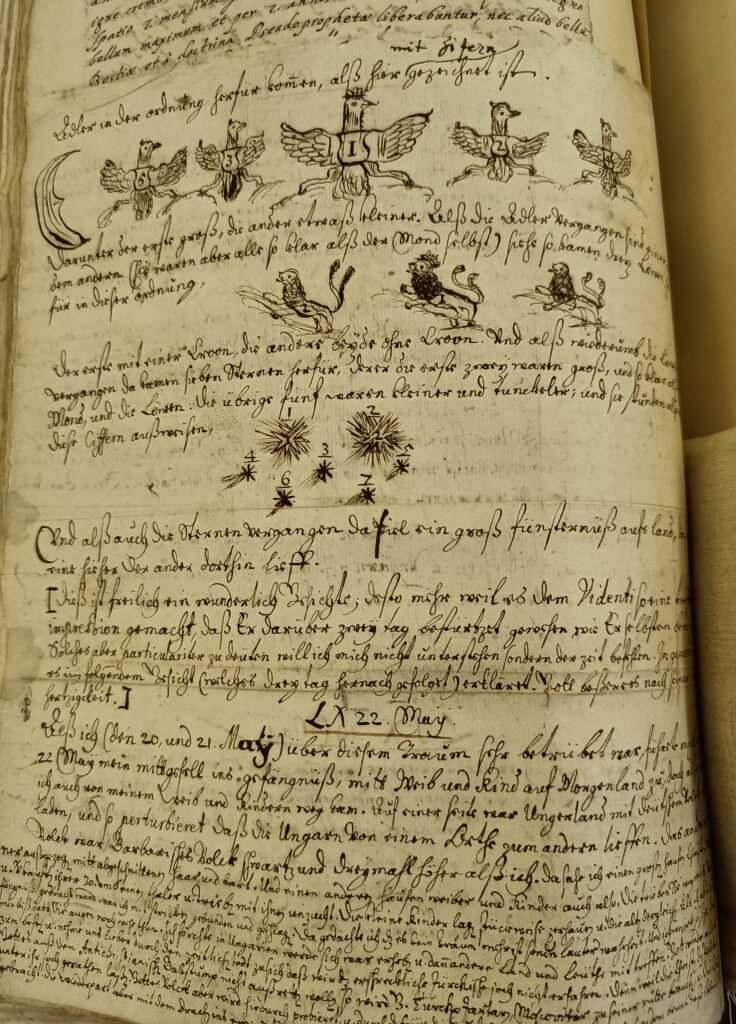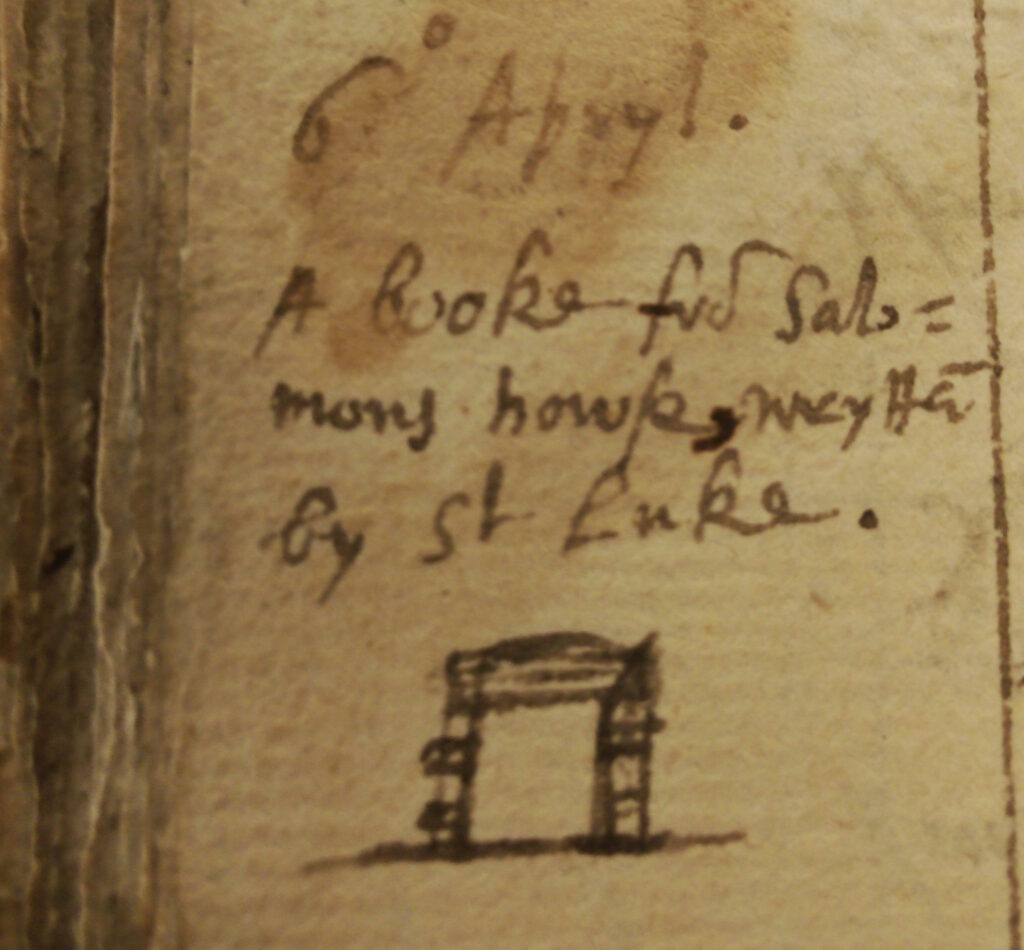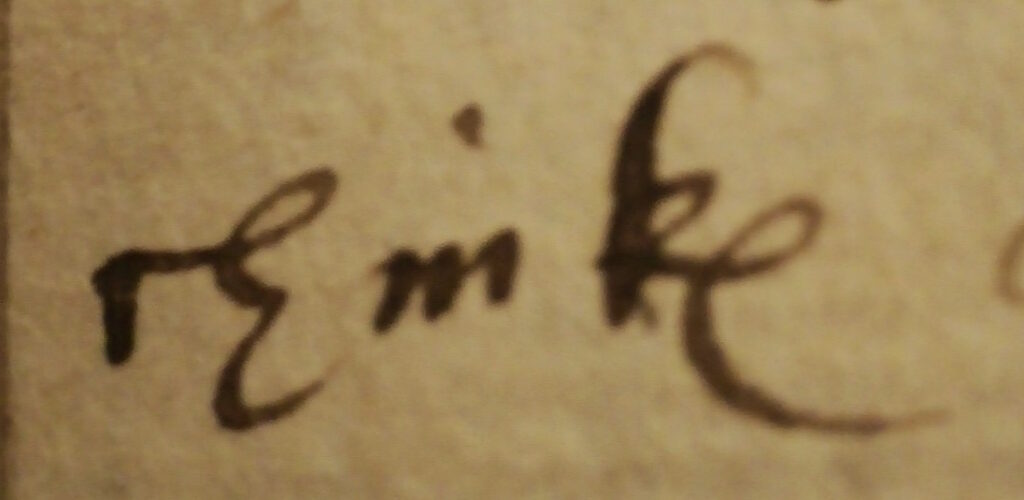
My work often takes me to some of the great libraries of the world, and when I’m in one I try to look through its manuscript collection, and maintain a list (ever-growing and rarely diminishing) of papers and lines of inquiry to follow, should I ever get a chance. One thread I’ve been following through the manuscript labyrinth of my home library in London is the interest in stones of various kinds by early modern magicians, diviners and alchemists.
This is partly motivated by my own practice: I use various stones and mirrors for spirit-calling and scrying (including a very beautiful mirror I saw in a dream and commissioned The Hermetic Workshop to build for me.) But it also comes from an interest in the historical practice of magician forebears and the odd status of stones and stone-gazing in early modern magic. Stone or crystal scrying is a practice which moves between elite and popular contexts in the period, and I don’t think it’s always clear what direction influence travels in. That aside, of course, ‘stone’ in an early modern magical context can always have alchemical as well as visionary qualities, and in a few texts it’s not always clear which property is intended (and it could always, perhaps, be both.) This line of inquiry is also prompted by a long-standing personal interest in a group of angelic magicians whose extensive journals survive, and who used a variety of glasses and stones to communicate with the entities originally described in John Dee’s diaries – in fact, one of the group appears to have owned a glass business. More on those magicians at a later date.
The unpublished text transcribed below is an anonymous letter in a collection of Hartlibian manuscripts in the British Library, Sloane MS 648. The Hartlib Circle has been extensively studied (most famously by Charles Webster in The Great Instauration from 1975) though the magical and alchemical interests of many of its members has tended – in my view – to be underemphasised. Sloane 648’s interests tend towards the mystical, prophetic, apocalyptic and Rosicrucian end of things and gathers many odd little texts of interest to historians of science, magic and religious politics of the period. Our text is catalogued as a ‘vision’ although it isn’t: it’s a text of spiritual alchemy, and outlines the properties of two stones, the Lapis Angelicus and the Lapis Evangelicus, which its author accounts far above the more familiar alchemical stone. The passage on the Lapis Angelicus – the Angelic Stone – is especially interesting, because it refers to it as an ‘Oraculous Method’ by which the user can see spirits. Quite what this stone is – seeing instrument, alchemical product, spiritual technique – seems at moments to shimmer, unclear.
The text below is a semi-diplomatic transcription. The hand – probably that of a Hartlibian copyist – is a very clear and elegant italic and very easy to read; the hands vary through the collection, which is a collation of many different original items.
BL Sloane MS 648 ff. 99r-100r
99
October 19. 1660
For the Lapis Angelicus & Evangelicus, as they are onely
Analogicall expressions, & are soe much each of them greater
then the other, & the lower so much greater then the La-
pis Physicus, as the Lapis Physicus is above Gold itselfe.
The explication of both wch is onely thus;
That as the more noble use of the Lapis Physicus is
rather as it is applyable to Medicine, the Metalls; soe the
most noble of all is in 2. other respects not yet knowne
to the world, but to some of the choysest of the Adepti, in
wch sense they doe now enjoy it, it may be in a more singu-
lar manner then any or ye most of them that went before
him. Vizt As from the foundation & light of this
the Visible Creation, & the whole structure & frame of it
cometh to be enlightened. 2dly As the Corruption & Male-
volency not of the Metalls onely, but it may be of the Plan-
etts themselves, & of the Aire cometh to be much corrected
& retunded, if not wholly purged by it. & the Beasts to feele
also the effects of it, who must & will finde the Benefit
of the Restitution of things.
The Lapis Angelicus therefore is an Oraculous Method
or Instrument for the seeing opening & discovering of
Spirits in generall, & of such invisible Powers & Substan-
ces, as the Eye can noe way see. And hath this certaine
effect upon man, more much & higher then the Lapis Phy-
sicus, that it purgeth ye spirit or minde of man as from
darkness & the power of sense, soe from dead workes.
Yet wherein the Lapis Aurificus is weake, this is power-
full & strong. For though ye Lapis Physicus may give Riches,
yet it giveth noe more; This not onely Wisdome, wch is
above Riches, but such a wisdome, as ye very lustre &
presence of it, not onely dischargeth the soule from care
& all feares actually & really, but from all covetousnes,
ambition, & all other more sensuall & lower passions, as
use notwithstanding the common & acquired wisdome
incident to the best of men, to be turbulent, distracting
&
[99v]
& disturbing of them; & therefore soe much of a higher &
more nobler Nature then the other, by how much content &
satisfaction is much higher then bare plenty or possession.
It is called Lapis Angelicus not from any feigned, but from
a reall ground, as standing in that substance, wch is Abstract
& Immateriall, like as the Lapis Physicus in that, wch is Tan-
gible & Materiall; And in that also wch is also common to
the Angells themselves with man: Beeing the admirable
& stupendious Harmony, Power, & deepe magiks arising
from the profound speculation originall, & connexion
of number simply, essentially & wholly, abstractedly &
by itselfe considered.
The Lapis Evangelicus is yet more stupendious,
more immediately Divine, more ravishing, bright
& Glorious, requiring & giveing a heart larger then the
Sand of the Sea; yea larger then that of Solomons, to
discerne it (And if you may judge me at all serious,
or these things serious of wch we are noe speaking, I
do neither mocke nor hyperbolize with you), and
you may therefore beare with me, If I either want
a fitt name, or a fulnesse & clearnesse of phrase, or
expression to intimate or describe it by. Its use being
for the opening the Threasures of Revelation, the sure &
infallible rootes of all sciences in men, the exquisit
beauty & structure of the true Pansophicall Temple,
the true ends, ordinations, series & orders of all things
as proceeding form the Divine Minde of the Father, through
the Spirit into the Mediator, & by the Mediator brought forth
into that actuall Existency & Beeing, as they are.
By this onely is discovered therefore the true state, true
Life, Nature, Dignity, Potentiality, Glory & Headship
of man, his ineffable Union & Priviledges in, by, &
with the great Lord the Mediator; The Way unto the
Tree of Life, & Garden of Eden, lying open unto man
through the mystery of his Union, & through the
nature
[100r]
nature of the Mediator with other mysteries touching ye
Father, blessed for ever, not here to be named or enquired.
The actuall Sight & Possession, of wch in some measure the
said Adepti have, makeing their Peace, Joy & Pleasure
in the Lord, when with him in the mount to be unexpressible.
And yet all that I have now said of this Excellent Stone
I should judge nothing, were one thing wanting in it,
wch this Stone, & this Stone onely can give, vizt The
Palpability, Security, & irrefragable certainty conveyed
to the minde by it, that this rich, glorious, & beautiful
order or series of things that they see, is what it is,
& what it is discovered to be; & can be noe other.
Heaven, Earth, ye Scriptures, Word & all things in their
Severall natures & effects signing, sealing, & wittnessing
to the truth of them.
Thus you see, I am not unwilling to gratifie you,
nor will I tye you up from communicating it to any,
you think it fitt, sober or worthy to receive, & to en-
tertaine such mysteries & freedomes; onely doe it with
Election & Discretion, & to all men whatsoever conceale
the name of
.
/
.
There is much that is interesting in this very short text: its author’s interest in the restitutive or healing effects of the first stone on parts of nature and even the planets themselves, for instance. This might be taken as an interest in remedial work on the dispositions of the planets in the birth chart, but it may also reflect a more general desire for restitution of a world marred by religious violence and conflagration. Unsurprisingly for a Hartlibian text, the later invocation of the ‘Pansophical’ Temple suggests its author was interested in Comenian schemes for universal peace and the reformation of education. It is likely the writer was Benjamin Worsley, and his desire for anonymity comes not only from his subject matter but the recent restoration of the monarchy and his former association with Cromwell.
The Angelical Stone, according to Worsley, is ‘abstract and immaterial’ and along with its power of spiritual sight it also gives access to particular spiritual states, a kind of adept-like apatheia – freedom from government by the passions. This distinguishes it from any shew-stone, of course – which are very much tangible and material – and leaves us thinking of a particular technique or inner state. Various modern spiritual paths which use the language and images of alchemy would recognise this state as a step on the initiatory way, though I would be wary of too much retrospective projection on these texts. Nonetheless, Worsley does also seem to suggest these ‘stones’, or at least knowledge of them, can be passed on.
Obviously, Worsley is more interested in the spiritual states offered by the stones – in keeping with his sincere if heterodox Christianity – than the opportunity they offer to speak with spirits. But it’s worth noting that there obviously was a tradition linking the products of alchemy with the possibility of spiritual conversation: Boyle’s fragmentary ‘Dialogue on the Converse with Angels Aided by the Philosophers’ Stone’ offers one nod to it. (Boyle was one of Worsley’s correspondents.) Wider references to the Lapis Angelicum in the period are much rarer, but the most notable occurs in Ashmole’s preface to the Theatrum Chemicum Britannicum (1652, B1r ff.)
Lastly, as touching the Angelicall Stone, it is so subtill, saith the aforesaid Author, that it can neither be seene, felt, or weighed; but Tasted only. The voyce of Man (which bears some proportion to these subtill properties,) comes short in comparison; Nay the Air it selfe is not so penetrable, and yet (Oh mysterious wonder!) A Stone, that will lodge in the Fire to Eternity without being prejudiced. It hath a Divine Power, Celestiall, and Invisible, above the rest; and endowes the possessor with Divine Gifts. It affords the Apparition of Angells, and gives a power of conversing with them, by Dreames and Revelations: nor dare any Evill Spirit approach the Place where it lodgeth. Because it is a Quintessence wherein there is no corruptible Thing: and where the Elements are not corrupt, no Devill can stay or abide.
Ashmole, of course, was deeply interested in angelic conversation – and all kinds of magic – as well as alchemy. And though these texts seem to take us far from crystal-gazing, they are good testament to the desire to speak with spirits that preoccupied many curious, experimental minds in the late 17th century. Perhaps in conclusion it is worth emphasising, too, that both Ashmole and Worsley see this power not simply as a mantic skill but a spiritual gift, fruit of the inner equanimity and self-realisation stressed in both their texts.




